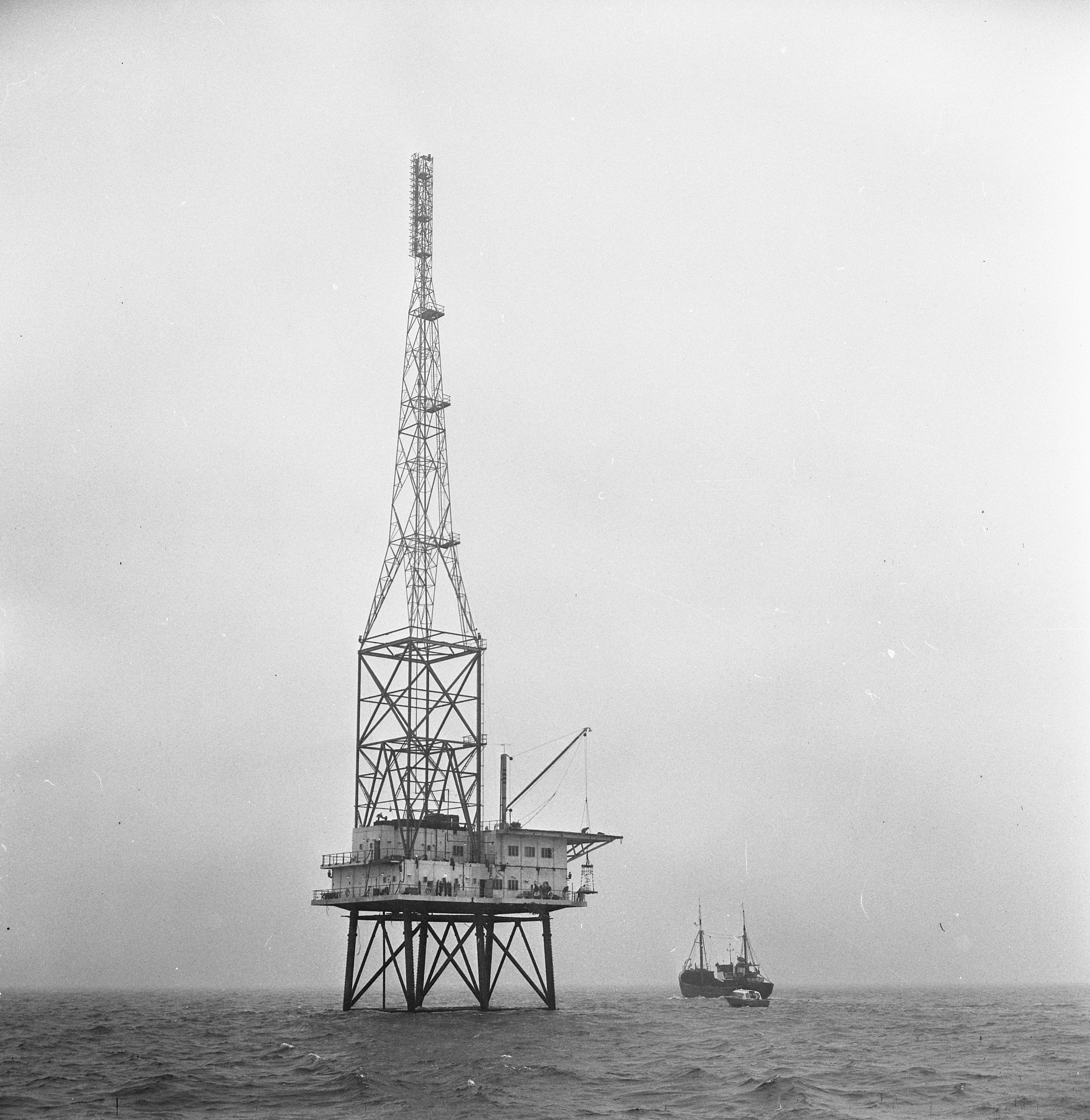|
Microbroadcasting
Microbroadcasting is the process of broadcasting a message to a relatively small audience. This is not to be confused with low-power broadcasting. Microbroadcasting, in radio terms, is the use of low-power transmitters (often Title 47 CFR Part 15 in the United States, or its equivalent elsewhere) to broadcast a radio signal over the space of a neighborhood or small town. Similar to pirate radio broadcasting, microbroadcasters generally operate without a license from the local regulation body, but sacrifice range in favor of using legal power limits (for example, 100 mW for medium wave Medium wave (MW) is the part of the medium frequency (MF) radio band used mainly for AM radio broadcasting. The spectrum provides about 120 channels with more limited sound quality than FM stations on the FM broadcast band. During the dayt ... broadcasts in the United States). Higher power levels can be achieved using carrier current techniques, which are widely used in colleges and ... [...More Info...] [...Related Items...] OR: [Wikipedia] [Google] [Baidu] |
AM Broadcasting
AM broadcasting is radio broadcasting using amplitude modulation (AM) transmissions. It was the first method developed for making audio radio transmissions, and is still used worldwide, primarily for medium wave (also known as "AM band") transmissions, but also on the longwave and shortwave radio bands. The earliest experimental AM transmissions began in the early 1900s. However, widespread AM broadcasting was not established until the 1920s, following the development of vacuum tube receivers and transmitters. AM radio remained the dominant method of broadcasting for the next 30 years, a period called the " Golden Age of Radio", until television broadcasting became widespread in the 1950s and received most of the programming previously carried by radio. Subsequently, AM radio's audiences have also greatly shrunk due to competition from FM (frequency modulation) radio, Digital Audio Broadcasting (DAB), satellite radio, HD (digital) radio, Internet radio, music streaming se ... [...More Info...] [...Related Items...] OR: [Wikipedia] [Google] [Baidu] |
Low-power Broadcasting
Low-power broadcasting is broadcasting by a broadcast station at a low transmitter power output to a smaller service area than "full power" stations within the same region. It is often distinguished from "micropower broadcasting" (more commonly "microbroadcasting") and broadcast translators. LPAM, LPFM and LPTV are in various levels of use across the world, varying widely based on the laws and their enforcement. Canada Radio communications in Canada are regulated by the Radio Communications and Broadcasting Regulatory Branch, a branch of Industry Canada, in conjunction with the Canadian Radio-television and Telecommunications Commission (CRTC). Interested parties must apply for both a certificate from Industry Canada and a license from CRTC in order to operate a radio station. Industry Canada manages the technicalities of spectrum space and technological requirements whereas content regulation is conducted more so by CRTC. LPFM is broken up into two classes in Canada, Low (5 ... [...More Info...] [...Related Items...] OR: [Wikipedia] [Google] [Baidu] |
FM Broadcasting
FM broadcasting is a method of radio broadcasting using frequency modulation (FM). Invented in 1933 by American engineer Edwin Armstrong, wide-band FM is used worldwide to provide high fidelity sound over broadcast radio. FM broadcasting is capable of higher fidelity—that is, more accurate reproduction of the original program sound—than other broadcasting technologies, such as AM broadcasting. It is also less susceptible to common forms of interference, reducing static and popping sounds often heard on AM. Therefore, FM is used for most broadcasts of music or general audio (in the audio spectrum). FM radio stations use the very high frequency range of radio frequencies. Broadcast bands Throughout the world, the FM broadcast band falls within the VHF part of the radio spectrum. Usually 87.5 to 108.0 MHz is used, or some portion thereof, with few exceptions: * In the former Soviet republics, and some former Eastern Bloc countries, the older 65.8–74 M ... [...More Info...] [...Related Items...] OR: [Wikipedia] [Google] [Baidu] |
Drive-in Theater
A drive-in theater or drive-in cinema is a form of cinema structure consisting of a large outdoor movie screen, a projection booth, a concession stand, and a large parking area for automobiles. Within this enclosed area, customers can view movies from the privacy and comfort of their cars. Some drive-ins have small playgrounds for children and a few picnic tables or benches. The screen can be as simple as a painted white wall, or it can be a steel truss structure with a complex finish. Originally, the movie's sound was provided by speakers on the screen and later by individual speakers hung from the window of each car, which was attached to a small pole by a wire. These speaker systems were superseded by the more practical method of microbroadcasting the soundtrack to car radios. This also has the advantage of the film soundtrack to be heard in stereo on car stereo systems, which are typically of much higher quality and fidelity than the basic small mono speakers used in the ... [...More Info...] [...Related Items...] OR: [Wikipedia] [Google] [Baidu] |
Radio Broadcasting
Radio broadcasting is transmission of audio (sound), sometimes with related metadata, by radio waves to radio receivers belonging to a public audience. In terrestrial radio broadcasting the radio waves are broadcast by a land-based radio station, while in satellite radio the radio waves are broadcast by a satellite in Earth orbit. To receive the content the listener must have a broadcast radio receiver (''radio''). Stations are often affiliated with a radio network which provides content in a common radio format, either in broadcast syndication or simulcast or both. Radio stations broadcast with several different types of modulation: AM radio stations transmit in AM ( amplitude modulation), FM radio stations transmit in FM (frequency modulation), which are older analog audio standards, while newer digital radio stations transmit in several digital audio standards: DAB (digital audio broadcasting), HD radio, DRM ( Digital Radio Mondiale). Television bro ... [...More Info...] [...Related Items...] OR: [Wikipedia] [Google] [Baidu] |
Title 47 CFR Part 15
Code of Federal Regulations, 'Title 47, Part 15(47 CFR 15) is an oft-quoted part of Federal Communications Commission (FCC) rules and regulations regarding unlicensed transmissions. It is a part of Title 47 of the Code of Federal Regulations (CFR), and regulates everything from spurious emissions to unlicensed low-power broadcasting. Nearly every electronics device sold inside the United States radiates unintentional emissions, and must be reviewed to comply with Part 15 before it can be advertised or sold in the US market. Subparts A - General Subpart A includes 21 sections from 15.1 to 15.38. states that any radiator (that which emits radio energy), whether or not intentional, must be licensed unless it meets 47 CFR 15 or is otherwise exempted by the FCC. the definitions are defined by the definition given. contains a general provision that devices may not cause interference and must accept any interference received. You are cautioned that any changes or modifica ... [...More Info...] [...Related Items...] OR: [Wikipedia] [Google] [Baidu] |
Pirate Radio
Pirate radio or a pirate radio station is a radio station that broadcasts without a valid license. In some cases, radio stations are considered legal where the signal is transmitted, but illegal where the signals are received—especially when the signals cross a national boundary. In other cases, a broadcast may be considered "pirate" due to the nature of its content, its transmission format (especially a failure to transmit a station identification according to regulations), or the transmit power (wattage) of the station, even if the transmission is not technically illegal (such as an amateur radio transmission). Pirate radio is sometimes called bootleg radio (a term especially associated with two-way radio), clandestine radio (associated with heavily politically motivated operations) or free radio. History Radio "piracy" began with the advent of regulations of the airwaves at the dawn of the age of radio. Initially, radio, or wireless as it was more commonly called a ... [...More Info...] [...Related Items...] OR: [Wikipedia] [Google] [Baidu] |
Medium Wave
Medium wave (MW) is the part of the medium frequency (MF) radio band used mainly for AM radio broadcasting. The spectrum provides about 120 channels with more limited sound quality than FM stations on the FM broadcast band. During the daytime, reception is usually limited to more local stations, though this is dependent on the signal conditions and quality of radio receiver used. Improved signal propagation at night allows the reception of much longer distance signals (within a range of about 2,000 km or 1,200 miles). This can cause increased interference because on most channels multiple transmitters operate simultaneously worldwide. In addition, amplitude modulation (AM) is often more prone to interference by various electronic devices, especially power supplies and computers. Strong transmitters cover larger areas than on the FM broadcast band but require more energy and longer antennas. Digital modes are possible but have not reached momentum yet. MW was the main radi ... [...More Info...] [...Related Items...] OR: [Wikipedia] [Google] [Baidu] |
Audio Tour
An audio tour or audio guide provides a recorded spoken commentary, normally through a handheld device, to a visitor attraction such as a museum. They are also available for self-guided tours of outdoor locations, or as a part of an organised tour. It provides background, context, and information on the things being viewed.Fisher (2004), p. 49. Audio guides are often in multilingual versions and can be made available in different ways. Some of the more elaborate tours may include original music and interviews. Traditionally rented on the spot, more recently downloaded from the Internet or available via the mobile phone network. Some audio guides are free or included in the entrance fee, others have to be purchased separately. History Willem Sandberg, director of the Stedelijk Museum in Amsterdam from 1945 to 1962, pioneered the world's first museum audio tours. When invented in 1952, the developers were drawn by its unique potential to mediate an experience individually con ... [...More Info...] [...Related Items...] OR: [Wikipedia] [Google] [Baidu] |
Broadcasting
Broadcasting is the distribution of audio or video content to a dispersed audience via any electronic mass communications medium, but typically one using the electromagnetic spectrum (radio waves), in a one-to-many model. Broadcasting began with AM radio, which came into popular use around 1920 with the spread of vacuum tube radio transmitters and receivers. Before this, all forms of electronic communication (early radio, telephone, and telegraph) were one-to-one, with the message intended for a single recipient. The term ''broadcasting'' evolved from its use as the agricultural method of sowing seeds in a field by casting them broadly about. It was later adopted for describing the widespread distribution of information by printed materials or by telegraph. Examples applying it to "one-to-many" radio transmissions of an individual station to multiple listeners appeared as early as 1898. Over the air broadcasting is usually associated with radio and television, thou ... [...More Info...] [...Related Items...] OR: [Wikipedia] [Google] [Baidu] |






